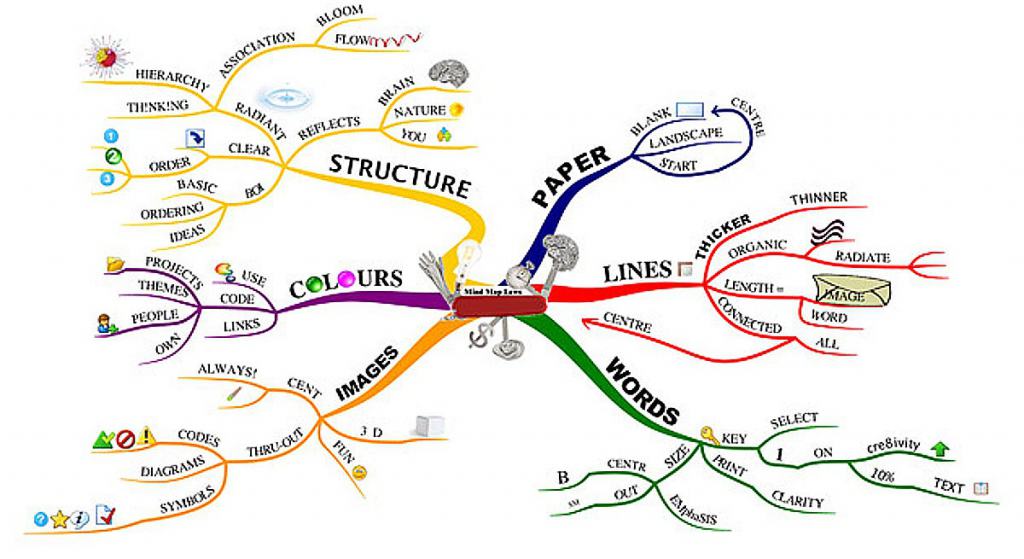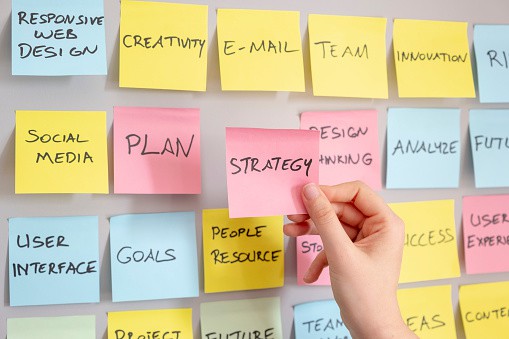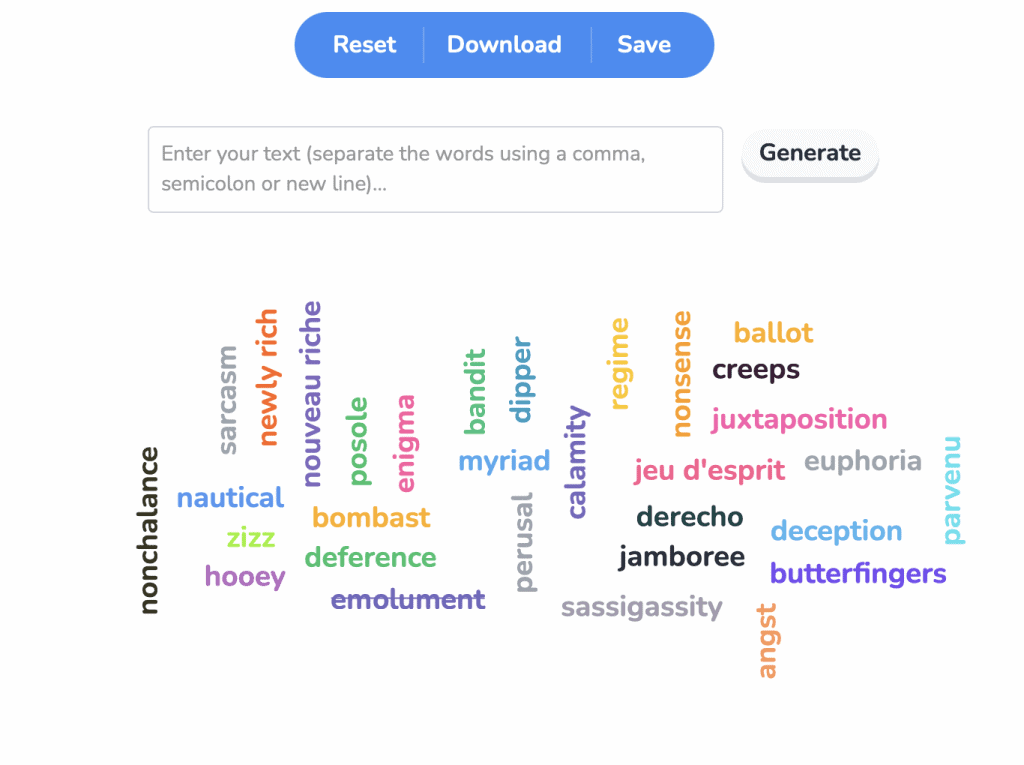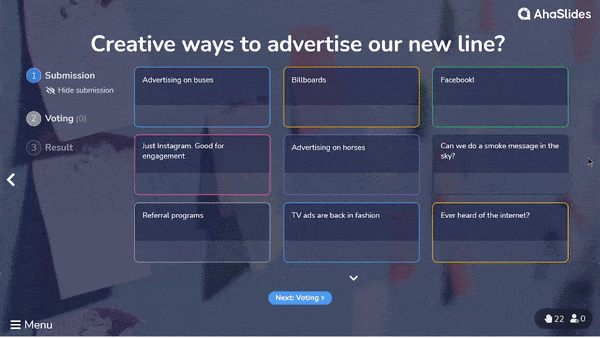Why is the idea generation process one of the essential paths of your career journey?
For many decades, humans have been trying to get an insight into many great scientists and artists in history, such as Albert Einstein, Leonardo DaVinci, Charles Darwin, and more, to figure out the origins of their inventions and works.
There are two kinds of controversial opinions as some believe that the breakthrough scientific achievements might stem from either their natural intellectual or inspiration popping up spontaneously.
Set aside the fact that many inventors are geniuses, introducing innovation might come from collective and cumulative progress, in other words, the idea generation process.

By understanding the essence of the idea generation process, humans can discover the true origins of creative behaviour, which promotes further journeys of unlocking the impossible for a better world. In this article, you will gain new insight into the notion of the Idea Generation Process in different areas and how to start an effective Idea Generation Process in some simple steps with technological support.
Get ready to explore the new perceptions of the Idea Generation Process (Idea Development Process). Let's dive into the best idea-generation techniques and also the process of idea-generation!
Table of Contents
- Importance of the Idea Generation Process
- Idea Generation in Different Careers
- Best Techniques to Maximize The Idea Generation Process
- Technique 1. Mindmapping
- Technique 2. Attribute Thinking
- Technique 3. Reverse Brainstorming
- Technique 4. Find Inspiration
- Technique 5. Use an online tool
- Technique 6. Brainwriting
- Technique 7. SCAMPER
- Technique 8. Role-playing
- Technique 9. SWOT Analysis
- Technique 10. Concept Mapping
- Technique 11. Asking Questions
- Technique 12. Brainstorming
- Technique 13. Synectics
- Technique 14. Six Thinking Hats
Importance of the Idea Generation Process
Ideation, or the idea generation process, is the first step to creating something new, which leads to an innovative strategy. For both business and personal contexts, idea generation is a beneficial procedure that contributes to personal growth and business thriving for both the short-term and long-term.
The notion of creativity is to leverage available resources, competitive intelligence, and market analysis to support the company in achieving its overall goal. Whether your companies belong to SMEs or giant enterprises, the idea-generation process is unavoidable.
Idea Generation in Different Careers
A much deeper insight into idea generation depends on the industry in which they work. As mentioned before, the Idea generation process is compulsory in all areas. Both employers and employees must generate new ideas for business development in any career. Let's take a quick look at the adoption of Idea generation in different jobs.
If you are working in the Digital Marketing field, there are many daily requirements for creative activities. For example, you must run many ads and promotions to attract customer attention and enlarge market shares. The tricky part is the Ads name ideas generator needs to be specific, sentiment, and unique.
Besides, the content marketing generator and generating more blog article ideas are also required to attach to the ads to ensure they go viral quickly, and the effect is doubled in the given time.
The first and most crucial step is to stand out from your competitors if you are a new startup or entrepreneur, especially in e-commerce or tech-related business. You can think about these directions: product or service portfolios such as new product development, idea generation, and brand names.
It is crucial for the company to carefully generate digital marketing business name ideas or creative agency name ideas in advance before choosing the final brand names to avoid duplicates, customer confusion, and the possibility of changing another character in the future.
In many big and multinational companies, there is more than one team to cover the same position, especially in sales departments. They can have more than two sales teams and even up to 5 teams to increase motivation, productivity, and job performance between employees and the team leaders. Therefore, innovative sales team name ideas should be considered instead of naming teams after numbers like team no.1, no. 2, no.3, and more. A good team name can help the members feel proud, belong, and be inspired, boosting motivation and ultimately enriching service and standards.
Best Techniques to Maximize The Idea Generation Process
If you think that generating unconventional ideas and behaviours happens randomly, the time seems right for you to change your mind. There are some idea-generation techniques that many people have adopted to trigger their brain and creativity. So, what are the best idea-generation techniques you should try? The following section shows you the best practices and step-to-step to generate ideas.
5 ways to maximize idea generation process includes mindmapping, atribute thinking, reverse brainstorming and finding inspiration:Technique 1. Mindmapping
Mind mapping is one of the most popularly-used idea generating techniques nowadays, especially in schools. Its principles are straightforward: organize information into a hierarchy and draw relationships among pieces of the whole.
When it comes to mind mapping, people think of systematic hierarchy and complicated branches showing connections among the different pieces of knowledge and information in a more structured and visual way. You can see the big picture of it and the details at the same time.
To start mind mapping, you can write down a key topic and add branches that will suggest the most basic subtopics and relevant concepts while attaching some images and colours to avoid monochrome and dullness. The power of mind mapping lies in clarifying complicated, wordy, and repetitive accounts, in other words, simplicity.
In the book " I am Gifted, So Are You", the author highlights how changing mindsets and using mind-mapping techniques have helped him make improvements in the short term. It is possible because mind mapping helps to reorganize thoughts, break complex concepts into more easy-to-understand information, connect ideas, and enhance overall cognitive processes.

Technique 2. Attribute Thinking
The best description of Attribute thinking is dividing the current issue into smaller and smaller sections and sizing up potential solutions to the cells. The best part of attribute thinking is that it can be leveraged for almost any type of problem or challenge.
The standard way to do attribute thinking is to start identifying backlogs that matter to your company's performance and goal achievement. Outline as many attributes or characteristics as possible and try to link them to innovative ideas. Then, specify the selection to determine the best option for your targets.

Technique 3. Reverse Brainstorming
Reverse thinking addresses an issue conventionally from the opposite direction and sometimes leads to unexpected solutions to challenging problems. Reverse thinking is digging out the cause or worsening of a problem.
To practice this method, you should ask yourself two "reverse" questions. For example, the usual question is, "How can we get more paid members to our app?". And the reversal is: "How can we get people to stop purchasing our paid packages? In the next step, list at least two possible answers; the more possibilities there are, the more effective they are. Finally, think of a way to promote your solutions in reality.
Technique 4. Find Inspiration
Finding inspiration is an arduous journey; sometimes, listening to others' opinions or going out of your comfort zone is not so bad. Or travelling to new places to experience new things and different stories, which may surprisingly inspire you in a way you never thought of before. You can find inspiration from many sources, such as social networks, surveys, and feedback. For example, in a couple of steps, you can launch a live poll on social media platforms to ask people's opinions about specific topics via AhaSlides interactive polls.
Technique 5. Use an online tool
You can fulfil your idea generation goals using an online tool like word cloud to ignite your brainstorming. The internet is crammed with many new technology solutions and is free. As more people bring e-notebook and laptops than pens and paper, the change to using online apps to brainstorm is obvious. Apps like AhaSlides word cloud, WordArt, Mentimeter, and more can be used in many systems, and you can freely come up with new ideas at any time and any place without concern of distraction.

Technique 6. Brainwriting
As its name, brainwriting, an idea generation example, is the combination of brainstorming and writing and is defined as a written form of brainstorming. Among many idea generating techniques, this method seems to emphasize written communication as a key component of the creative process.
Brainwriting is particularly effective in group settings where multiple individuals contribute to generating ideas in a structured and organized manner. Instead of getting people to speak out ideas in front of others, brainwriting gets people to write them down and share them anonymously. This silent approach minimizes the influence of dominant voices and allows for a more equitable contribution from all team members.
Technique 7. SCAMPER
SCAMPER stands for Substitute, Combine, Adapt, Modify, Put to another use, Eliminate, and Reverse. These idea-generating techniques work best when looking for solutions and thinking creatively.
- S - Substitute: Replace or substitute certain elements or components with others to explore new possibilities. This involves looking for alternative materials, processes, or concepts that could enhance the original idea.
- C - Combine: Combine or integrate different elements, ideas, or features to create something new. This focuses on bringing together diverse components to generate synergy and novel solutions.
- A - Adapt: Modify or adapt existing elements or ideas to fit a different context or purpose. This action suggests adjusting, changing, or tailoring elements can be a better fit for the given situation.
- M - Modify: Make modifications or changes to existing elements to improve or enhance their characteristics. This refers to altering aspects such as size, shape, color, or other attributes to create improvements or variations.
- P - Put to Another Use: Explore alternative applications or uses for existing elements or ideas. This involves considering how the current elements can be repurposed or utilized in different contexts.
- E - Eliminate: Remove or eliminate certain elements or components to simplify or streamline the idea. This aims to identify non-essential elements and remove them to focus on the core concept.
- R - Reverse (or Rearrange): Reverse or rearrange elements to explore different perspectives or sequences. This forces individuals to consider the opposite of the current situation or alter the order of elements to generate new insights.
Technique 8. Role-playing
You might be familiar with the term role-playing in acting classes, business training, and many educational purposes from kindergarten to higher education to enhance learning experiences. What makes it unique from other idea generation techniques are so many such as:
- It aims to simulate real-life situations as closely as possible. Participants take on specific roles and engage in scenarios that mimic authentic experiences.
- Participants explore various contexts and perspectives through role-playing. By assuming different roles, individuals gain insights into others' motivations, challenges, and decision-making processes.
- Role-playing allows for immediate feedback. Participants can receive constructive feedback from facilitators, peers, or even themselves after each scenario. This is an effective feedback loop that facilitates continuous improvement and learning refinement.

Technique 9. SWOT Analysis
When it comes to idea generation in entrepreneurship with the involvements of many variables or factors, SWOT analysis plays a key role. SWOT analysis, an acronym for Strengths, Weaknesses, Opportunities, and Threats is commonly used as a strategic planning tool to help analyze various factors (internal and external) affecting a business or project.
Unlike other idea generation techniques, SWOT analysis is considered more professional and takes more time and intention to process, as it can provide a holistic view of the business environment. It involves a systematic examination of various elements, often guided by a facilitator or a team of experts.
Technique 10. Concept Mapping
Many people think mind-mapping and concept mapping are the same. In some specific situations, it is true, such as the involvement of the visual representation ideas. However, Concept maps emphasize relationships between concepts in a network structure. Concepts are connected by labeled lines that indicate the nature of the relationship, such as "is a part of" or "is related to." They are often used when a more formal representation of knowledge or concepts is required.
Technique 11. Asking Questions
This idea sounds simple yet not everyone knows how to leverage it effectively. In many cultures, such as in Asia asking to address a problem isn't a favorite solution. Many people are afraid of asking others, students don't want to ask their classmates and teachers, and freshers don't want to ask their seniors and supervisors, which are so common. Why asking is one of the most effective idea generating techniques, the answer has only one. It is an act of critical thinking, as they express a desire to know more, understand deeply, and explore beyond the surface.
Technique 12. Brainstorming
Other excellent idea generating techniques examples are reverse brainstorming and collaborative brainstorming. They are the most popular practices of brainstorming but have different approaches and processes.
- Reverse brainstorming refers to a creative problem-solving technique where individuals intentionally reverse the traditional process of generating ideas. Instead of brainstorming solutions to a problem, reverse brainstorming involves generating ideas on how to cause or exacerbate the problem. This unconventional approach aims to identify root causes, underlying assumptions, and potential obstacles that may not be immediately apparent.
- Collaborative brainstorming is not a new concept but it is increasingly paid attention to as it promotes virtual collaboration within a team. AhaSlides describes this technique as the best tool for seamlessly orchestrating virtual collaboration and engagement in the generation of ideas where team members work in different locations in real time.

Technique 13. Synectics
If you want to generate ideas for solving complex problems in a more organized and structured way, Synectics sounds like a perfect fit. This method has its roots in the Arthur D. Little Invention Design Unit in the 1950s. Then it was developed by George M. Prince and William J.J. Gordon. in the 1960s. There are three important points to note down when using this method:
- The Panton Principle, a fundamental concept in Synectics, highlights the importance of striking a balance between familiar and unfamiliar elements.
- The Synectics process relies on the suspension of judgment during the idea generation phase, enabling a free flow of creative thinking.
- To fully leverage the power of this method, it's crucial to assemble a group with varied backgrounds, experiences, and expertise.
Technique 14. Six Thinking Hats
In the bottom list of great idea generating techniques, we suggest Six Thinking Hats. This method is extremely useful in structuring and enhancing group discussions and decision-making processes. Developed by Edward de Bono, Six Thinking Hats is a powerful technique that assigns participants specific roles or perspectives represented by different-colored metaphorical hats. Each hat corresponds to a specific thinking mode, allowing individuals to explore a problem or decision from various angles.
- White Hat (Facts and Information)
- Red Hat (Emotions and Intuition)
- Black Hat (Critical Judgment)
- Yellow Hat (Optimism and Positivity)
- Green Hat (Creativity and Innovation)
- Blue Hat (Process Control and Organization)

The Bottom Line
Bringing novel ideas into the light can be difficult. Remember that when it comes to brainstorming, your thoughts or anyone's idea cannot be defined as true or wrong. The goal of generating ideas is to come up with as many ideas as possible so that you can discover the best key for unlocking your challenges.
Reference: StartUs magazine
Frequently Asked Questions
What are the four 4 ways of generating ideas?
Here are some great ways to ideate:
Ask questions
Write your ideas down
Conduct associative thinking
Experiment the ideas
What is the most popular ideation technique?
Brainstorming is one of the most idea generating techniques nowadays. It can be used in almost all situations, for both educational and business purposes. The best way to conduct an effective brainstorming process is to (1) Know your focus; (2) Visualize the goals; (3) Discuss; (4) Think aloud; (5) Respect every idea; (6) Collaborate; (7) Ask questions. (8) Organize thoughts.
Importance of the Idea Generation Process
Idea generation process is the first step to creating something new, which leads to an innovative strategy. For both business and personal contexts, Idea Generation is a beneficial procedure that contributes to personal growth and business thriving for both the short-term and long-term.
5 Ways to Maximize Idea Generation Process
5 Ways to maximize Idea Generation Process includes Mindmapping, Atribute Thinking, Reverse Brainstorming and Finding Inspiration.
What are the seven steps to generate an idea with AhaSlides Word Cloud?
Create a link for Word Cloud and integrate it into the presentation if needed (1) Gather your team and ask people to enter the link of AhaSlides Word Cloud (2) Introduce a challenge, problems and questions (3) Set up the time limitation for collecting all responses (4) Require participants to fill the Word Cloud with many keywords and relevant terms as possible (5) Discussing with each other while generating ideas in the app simultaneously. (6)Save all the data for further activities.
Ref: Indeed



